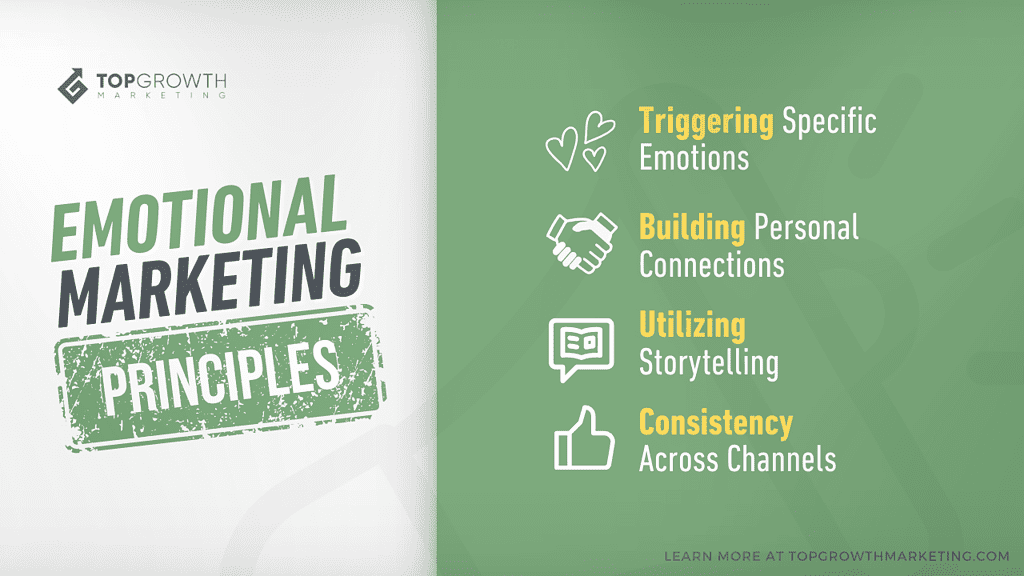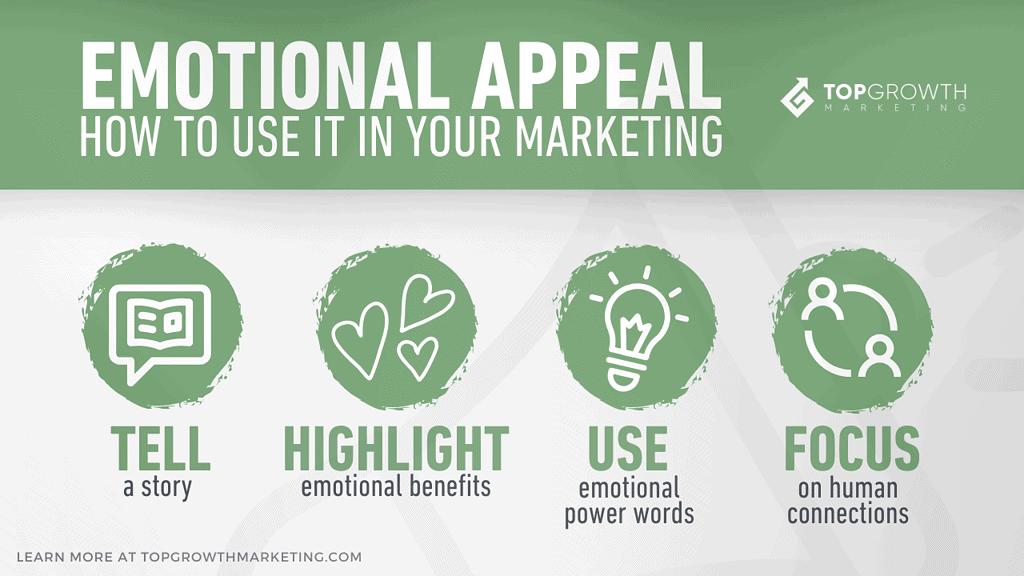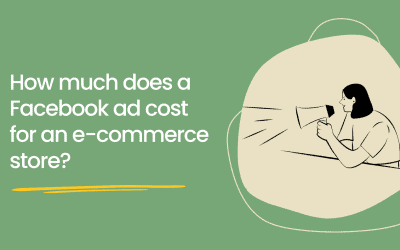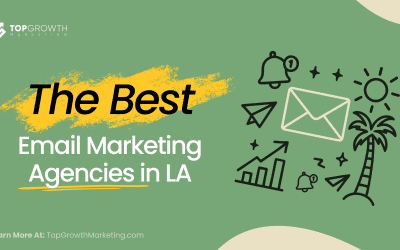Imagine your e-commerce store not just as a marketplace, but as a stage.
Every product tells a story, and every click ignites a connection. This isn’t about transactions; it’s about transformations.
Emotional marketing is the unsung hero in this narrative. Emotional marketing takes the focus away from simply presenting a product with a metaphorical ‘buy me’ sticker. It’s about creating experiences that resonate in your marketing collateral.
As e-commerce store owners, you have the unique power to not just capture attention, but to captivate hearts.
In this blog post, we’ll strip away the complexities and dive into the heart of emotional marketing. Here are the basics about how to turn visitors into loyal fans, and products into emotions.
What is Emotional Marketing?
For starters, let’s establish a working definition of emotional marketing.
❤️ Emotional marketing is a technique that aims to create an emotional connection between a brand and its target audience.
On its surface, that’s relatively straightforward. But it’s challenging to execute correctly.
While traditional marketing techniques focus on the features and benefits of a product or service, emotional marketing takes a different approach.
Instead, it aims to create a personal connection with the customer by making them feel something, whether it be joy, nostalgia, excitement, or even sadness. This connection can then foster a sense of empathy and recognition between the consumer and the brand.
You can see how it’s much easier to explain what a product does for someone. But it’s much more difficult to get across how that product will make them feel.
That’s why emotional branding is so powerful—it creates a lasting impression in the consumer’s mind based on how they feel about the brand, not just what they know about it.
Big brands like Coca-Cola and Apple are constantly appealing to people’s emotions in their advertising. Of course, that’s because those brands spent decades getting people emotionally involved with them – so the sooner you start, the better.
Why is Emotional Marketing Important?
Emotional marketing isn’t just important for long-term success. It is easily the most decisive strategy if you want to eventually become a household brand.
By understanding the psychology of marketing, we can use emotional branding techniques to create a strong brand perception, boost customer engagement, and build brand loyalty.
This is especially important in today’s crowded marketplace, where consumers have countless options and can easily switch to another brand if they don’t feel a connection.
Briefly, these are the key benefits that emotional marketing can have for your brand:
- Standing Out in Competitive Markets: Emotional marketing helps a brand differentiate itself in a saturated marketplace, ensuring it captures and retains consumer attention.
- Enhancing Marketing Effectiveness: By employing emotional intelligence, marketing messages are crafted to deeply resonate with the target audience, increasing their impact.
- Personalized Consumer Experience: Analyzes consumer behavior to tailor marketing materials, making the brand more relatable and authentic.
- Strengthening Brand Storytelling: Leveraging the power of storytelling in marketing creates a stronger human connection and empathy with the audience, enhancing brand recall.
- Drives Higher Value Transactions: This leads to customers purchasing more frequently and at higher price points due to the emotional bond with the brand.
Principles of Emotional Marketing
Emotional marketing is a powerful tool in the arsenal of any brand, particularly in the e-commerce space. It revolves around creating a deep, emotional connection between a brand and its audience. Here are some key principles of emotional marketing, based on research and expert insights:
Triggering Specific Emotions: Utilize psychological triggers to evoke specific, relatable emotions in the audience, creating a memorable connection with the brand.
Building Personal Connections: Shift focus from just product features to creating personal bonds with customers, fostering empathy and brand recognition.
Utilizing Storytelling: Employ storytelling to craft narratives that resonate with the audience, enhancing emotional engagement and brand recall.
Understanding Consumer Psychology: Deeply analyze consumer behavior and needs to tailor marketing strategies that effectively resonate on an emotional level.
Consistency Across Channels: Ensure a unified and coherent emotional message across all marketing channels for a consistent brand experience.
Understanding Your Target Audience
At the heart of emotional marketing lies the understanding of your target audience. To create campaigns that truly resonate with your customers, you need to know who they are, what they need, and what drives them.
To start, you can gather data on your target audience through surveys, social media analytics, and website metrics. You can also conduct customer research, which involves asking specific questions to your target demographic.
Here are some key points to keep in mind when it comes to understanding your target audience:
- Demographics: age, gender, location, income level, education level
- Psychographics: values, beliefs, interests, opinions, lifestyle choices
- Pain points: challenges, needs, and areas of dissatisfaction that your product or service can address
- Communication preferences: how your target audience prefers to interact with your brand (e.g. social media, email, phone)
Once you have a clear understanding of your target audience, you can start creating a brand story that resonates with them.
How to Collect Audience Data
Here are some practical methods to collect this information:
Surveys and Feedback Forms: Use tools like Google Forms or SurveyMonkey to create surveys that can be sent to your customers post-purchase or via email newsletters. Ask questions related to their shopping experience, preferences, and feedback.
Social Media Analytics: Platforms like Facebook, Instagram, and Twitter provide detailed analytics about your followers. This includes demographic data, engagement times, and content preferences. Analyzing these can give insights into who your audience is and what content resonates with them.
Customer Reviews and Feedback: Monitor reviews and feedback on your own store, as well as on third-party platforms like Amazon or Yelp. This can provide direct insights into what customers like and dislike about your products and services.
Engaging in Social Listening: Use tools like Hootsuite, Sprout Social, Synup, or SparkToro to monitor what people are saying about your brand and your industry online. This can provide unfiltered opinions and discussions from potential customers.
Reddit and Online Forums: Participate in or monitor discussions on platforms like Reddit, Quora, and niche forums related to your space. These platforms can offer unfiltered insights into what potential customers are interested in and their pain points.
That’s a lot to sift through, so don’t expect it to happen overnight.
Understanding your audience is an active process that you’ll have to engage in consistently. That is, you’ll want to update your understanding of how your audience evolves so your marketing efforts can evolve with them.
Crafting Your Brand Story
Once you know who you’re marketing to, you can set out to create a compelling brand story for that audience.
Like the process of discovering your audience, crafting your brand story is an ongoing effort.
Think, for instance, about how IBM has had to change its brand story as it focused on producing electric typewriters, later personal computers, then laptops, and nowadays more cloud services than anything else.
At each stage, IBM had to present a completely different story for its core audience.
Your brand story is the narrative that defines who you are, what you stand for, and why you do what you do. When done well, it can evoke powerful emotions in your audience and create a lasting impression.
The first step in crafting your brand story is to identify your unique selling proposition (USP) and your brand’s values.
What sets you apart from your competitors? What do you stand for? Once you have a clear understanding of your USP and brand values, you can start to create a narrative that reflects these qualities.
When crafting your brand story, it’s important to be authentic and genuine. Don’t try to be something you’re not or present a false image of your brand.
Today’s consumers are savvy and can spot inauthenticity from a mile away. Instead, focus on creating a story that is true to your brand and resonates with your audience.
Using Emotional Appeals in Your Marketing Materials
The purpose of your brand story is to guide your emotional marketing efforts.
You can always refer to your brand story and identity and see if your ad copy, imagery, and other marketing collateral line up.
And when it comes to crafting marketing material here are some ways you can incorporate emotional appeals:
- Tell a Story: Storytelling is a powerful way to create an emotional connection with your audience. By telling a story that resonates with your audience’s experiences and values, you can create a sense of empathy and understanding that can translate into stronger brand loyalty.
- Highlight Emotional Benefits: When promoting your products or services, it’s important to focus on the benefits they provide rather than just the features. By highlighting the emotional benefits of your offerings – such as increased happiness, confidence, or peace of mind – you can tap into your audience’s desires and aspirations.
- Use Emotional Power Words: Using emotionally charged language in your marketing materials can help to create a sense of urgency and importance. Words like “love,” “happiness,” and “security” can tap into your audience’s deepest desires and needs.
- Focus on Human Connection: Authenticity and empathy are key components of emotional marketing. By focusing on building genuine connections with your audience – through personalization, social proof, or simply demonstrating genuine care and concern – you can create a sense of trust and loyalty that can drive long-term success.
Successful Examples of Emotional Marketing
When it comes to emotional marketing, seeing is believing. Here are some successful examples of emotional marketing in action:
- Coca-Cola’s “Share a Coke” Campaign In 2014, Coca-Cola launched a campaign that replaced its logo with popular names and terms such as “Mom,” “Friend,” and “BFF.” The idea was to encourage customers to buy a Coke for someone special and share the experience. The campaign tapped into the emotional desire for connection, recognition, and belonging, resulting in a 2% increase in sales and 11 million Coke-related social media posts.
- Dove’s “Real Beauty” Campaign challenged the conventional beauty industry by celebrating real women’s bodies in various shapes, sizes, and ages. The campaign aimed to instill confidence and self-esteem in women while creating an emotional connection with the brand. This beauty ad campaign went viral, resulting in a 700% increase in sales and a 43% increase in brand loyalty.
- Always’s “Like a Girl” Campaign In 2014 seeks to empower young girls and redefine the phrase “like a girl” from an insult to a compliment. The campaign touched on the emotional struggle of growing up as a girl and the societal pressure to conform to gender norms. The campaign’s emotional appeal resonated with viewers, resulting in over 90 million views, 4 billion media impressions, and a 20% increase in sales.
- Nike’s “Dream Crazier” Campaign featured female athletes breaking barriers, challenging stereotypes, and pushing boundaries. The campaign aimed to inspire women to dream big and pursue their passions. The campaign’s emotional messaging tapped into the human desire for personal growth and achievement, resulting in over 8 million views and a 31% increase in online sales.
- Petco’s “Think Adoption First” campaign successfully advocated for pet adoption, highlighting the advantages of adopting from shelters and rescue organizations, and effectively encouraged more people to choose adoption. It highlights just how powerful emotional messaging can be in pet brand marketing.
When executed correctly, emotional marketing can differentiate your brand from competitors, strengthen your brand identity, and create a community around shared values and aspirations.
Potential Risks of Emotional Marketing
While emotional marketing can be a powerful tool to connect with your audience on a deeper level, it’s important to recognize that there are potential risks involved as well. Here are a few things to keep in mind:
- Alienating Some Customers: While emotional marketing may resonate with some customers, others may not connect with it or may even find it off-putting. For example, a campaign that tries to appeal to a sense of nostalgia may not be effective for younger consumers who don’t share the same memories.
- Being Perceived as Inauthentic: If you try to use emotional appeals that don’t align with your brand or values, you risk coming across as inauthentic or insincere.
- Overpromising and Underdelivering: Emotional marketing can create high expectations among your audience, and failing to meet those expectations can be damaging to your brand reputation. If you use emotional appeals such as “life-changing” or “revolutionary,” be sure that your product or service can actually deliver on those promises.
By considering these potential risks upfront, you can take steps to mitigate them and create more effective emotional marketing campaigns.
Ethical Considerations of Emotional Marketing
Using emotional appeals to connect with your audience can be incredibly powerful.
On a fundamental level, emotional purchases are impulse purchases.
Dan Hill emphasizes in his book (Emotionomics: Leveraging Emotions for Business Success) that feelings precede conscious thought. Therefore, emotion-based marketing can be construed as somewhat manipulative – so you have a serious responsibility to use it sensibly.
One thing to consider is the potential impact of emotional marketing on vulnerable populations.
For example, if you’re marketing health products, it’s important to ensure that your messaging isn’t preying on the fears and anxieties of people who may be struggling with health problems.
Additionally, it’s important to consider the potential for emotional marketing to harm society as a whole.
For example, if your marketing messages are promoting unrealistic beauty standards or perpetuating harmful stereotypes, it can have negative impacts on individuals and society as a whole.
It’s important to think carefully about the impact your marketing messaging may have on your audience and society as a whole.
Consider the potential long-term effects of your messaging and ensure that you’re not contributing to any negative societal trends.
Being aware of these adverse effects, and striving to avoid them, will actually make your messaging more powerful. Not less.
Harnessing the Power of Emotional Marketing
This approach transcends the traditional boundaries of marketing, moving beyond mere transactions to create transformative experiences that resonate at a personal level.
The essence of emotional marketing lies in its ability to evoke feelings – joy, nostalgia, excitement, or even sadness – thereby fostering a unique bond between your brand and its consumers.
Incorporating emotional marketing requires a deep understanding of your audience, a compelling brand story that aligns with your values, and a consistent, authentic message across all channels.
Are you ready to transform your brand’s story into an unforgettable emotional journey? Reach out and schedule a call, and we’ll help you create a strategy for your brand.









0 Comments